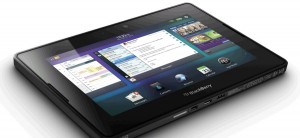Blackberry, formerly known as RIM, has been known to be in financial turmoil for a while now. It announced Monday that Fairfax Financial Holdings Inc, who already owns 9.9% of Blackberry, is offering to buy the company for $4.7 billion. One problem that may have led to Blackberry’s downfall may be correlated to the first and only offering of the Playbook tablet.
 source: Bay Observer
source: Bay ObserverThe tablet initially started selling at $500, but the lack of success in selling inventory forced Blackberry to lower prices to $200, selling the product at a loss for the company. In this case, marketing does not meet accounting at all. Marketing says not enough consumers will buy the product at its initial selling price but accounting shows that the price consumers are willing to purchase at will result in a loss for the company. The features that were built-in to attempt to increase Blackberry users ended up being a flaw and inconvenience to consumers, such as the tablet’s inability to run an email application unless connected a Blackberry Smartphone. The idea of marketing its smartphone and tablet as complementary products failed and as a result, accounting had to deal with the repercussions as well. Sometimes company decisions and consumer preferences don’t align, and in those cases, marketing and accounting do have to face certain trade-offs. Over time, the culmination of these trade-offs have placed Blackberry in the undesirable situation they are in right now: having no other choice but to sell the company.
